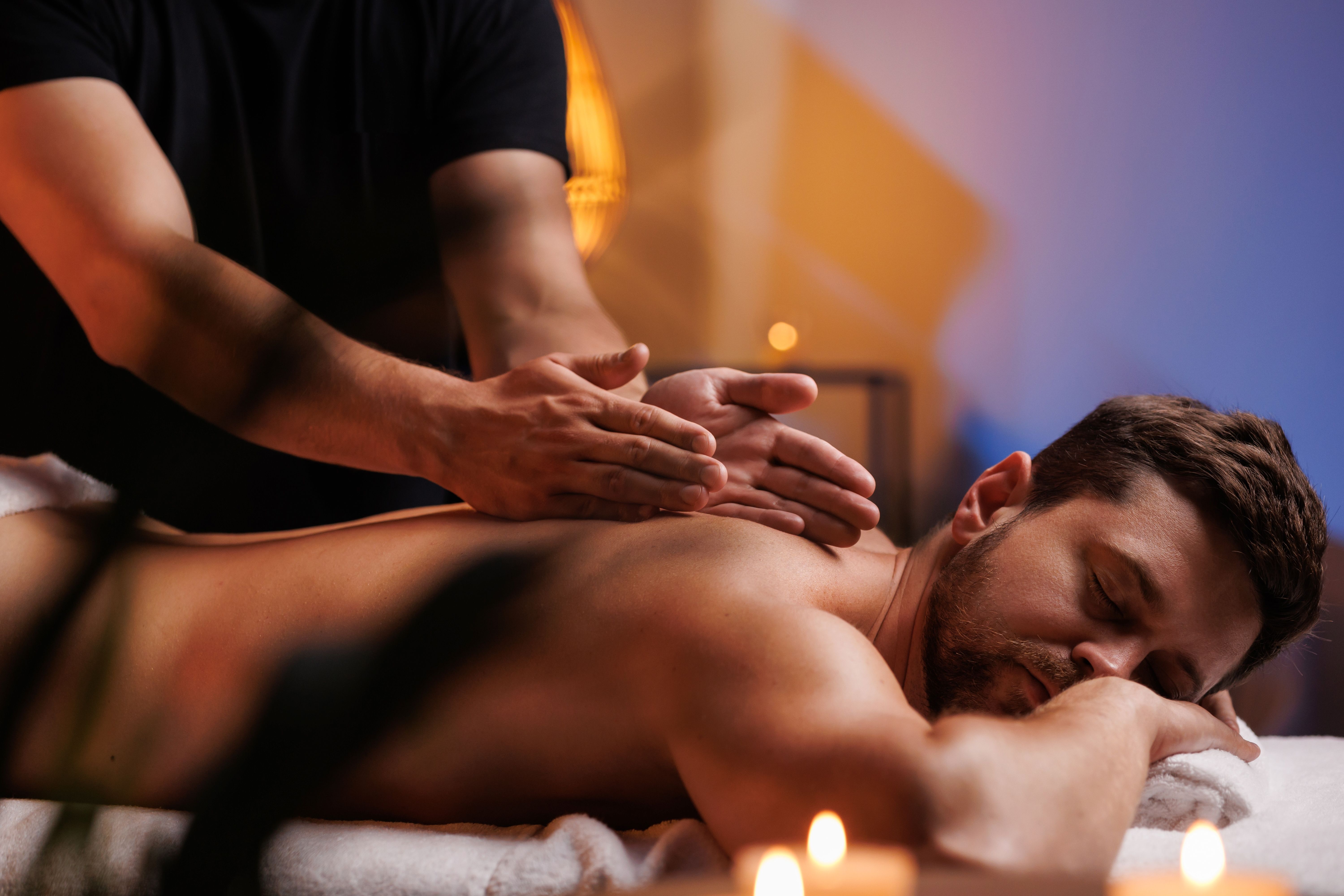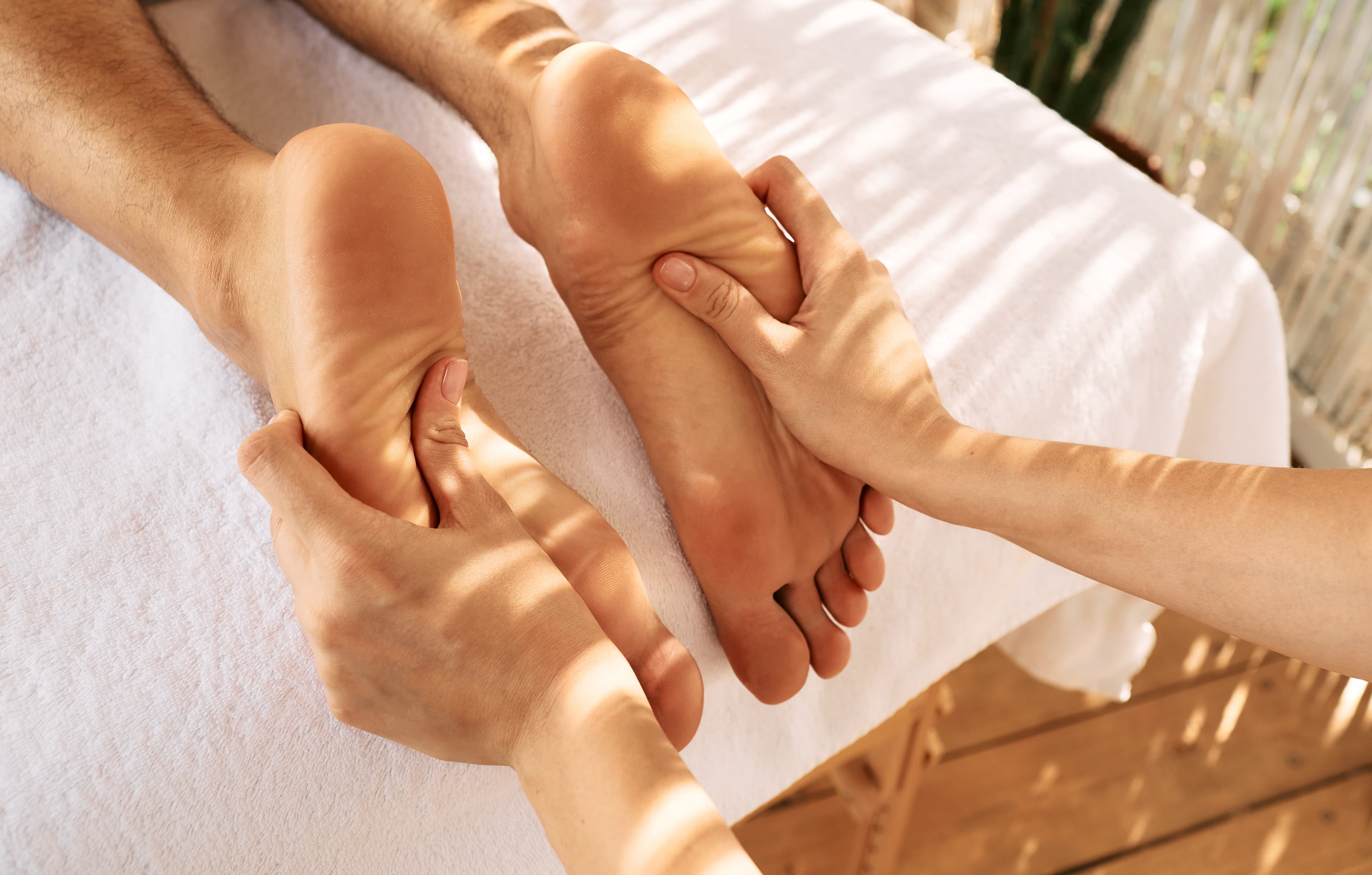Reflexology massage is a holistic therapy that has gained recognition for its potential to enhance overall well-being. By applying pressure to specific points on the feet, hands, or ears, reflexology aims to promote relaxation, reduce stress, and support the body's natural healing process. When combined with the soothing effects of a heated massage chair, which offers full-body relief and enhances circulation, the benefits of reflexology can be further amplified, providing a deeply restorative experience that targets both physical and mental well-being.
Reflexology - what it is and how it may benefit you
As explained, reflexology is a therapeutic practice rooted in ancient healing traditions, focusing on applying pressure to specific reflex points on the feet, hands, and ears. These points correspond to various organs and systems within the body, and by stimulating them, reflexology aims to restore balance and promote natural healing.
Potential benefits of reflexology include:
- stress reduction: when applied correctly, reflexology promotes relaxation and helps manage stress.
- pain relief: it may alleviate pain from various conditions, such as migraines and back pain.
- improved circulation: reflexology encourages better blood flow and oxygenation throughout the body.
- enhanced well-being: offers support for overall physical and mental health.
- better sleep: it can improve sleep quality by reducing tension and promoting relaxation.
The reflexology massage techniques you should try
Reflexology massage offers a variety of techniques designed to target specific reflex points on the feet, hands and ears, each linked to different areas of the body. These techniques can be easily incorporated into your wellness routine to help alleviate stress, improve circulation, and enhance overall well-being. Whether you're a beginner or more experienced in reflexology, these techniques are accessible and can be tailored to your individual needs.
Here are a few examples of massage techniques that can be easily incorporated into your daily routine:
Thumb Walking
Thumb walking is a foundational reflexology technique where the thumb is used to apply pressure in a step-like motion along the reflex points on the feet, hands, or ears.
- Start by placing your thumb on a reflex point. Apply gentle pressure, then "walk" your thumb forward by bending the thumb joint slightly and moving it to the next point. Repeat this motion, gradually moving across the reflex zone. This technique is effective in stimulating specific areas of the body associated with the reflex points being targeted.
Thumb walking is excellent for systematically covering large areas and is particularly useful for improving circulation and relieving tension in the corresponding organs or body parts.
Finger Rotation
Finger rotation involves applying circular pressure with the fingertips on specific reflex points to stimulate the corresponding areas in the body.
- Identify the reflex point you want to target, then place the tip of your finger on it. Apply gentle pressure and begin to rotate your finger in a small circular motion. Maintain consistent pressure while rotating to ensure that the reflex point is adequately stimulated.
This technique is good for breaking up tension and blockages in specific areas. It is particularly beneficial for stress relief and promoting relaxation in targeted body systems.
Hook and back-up
The hook and back-up technique is a more focused approach, designed to target and release specific reflex points that may be harder to reach or require deeper pressure.
- Place your thumb on the reflex point and apply pressure. Hook your thumb into the point by bending the thumb joint. Then, slightly pull back or "back-up" while maintaining the pressure. This action intensifies the stimulation of the reflex point.
This technique is effective for releasing blockages and tension in deep or sensitive reflex points. It’s particularly useful for addressing specific issues like headaches, digestive problems, or chronic pain.
Press and hold
Press and hold is a simple but powerful technique where steady pressure is applied to a reflex point and maintained for a short period.
- Place your thumb or finger on the chosen reflex point, apply firm pressure, and hold it for about 5-10 seconds. Release the pressure slowly and repeat if necessary.
The press and hold technique is recommended for stimulating reflex points that correspond to areas of the body needing more attention. It’s great for relieving tension and promoting healing in the targeted organs or systems.
Rolling
Rolling involves using the knuckles, fingers, or even a reflexology tool to roll over larger reflex areas, creating a massaging effect that enhances circulation and reduces stiffness.
- With your knuckles or fingers, apply pressure to the reflex area and roll back and forth over the surface in a smooth, controlled motion. You can use this technique on broader areas like the sole of the foot or the palm of the hand.
Rolling is excellent for improving blood flow, reducing stiffness, and loosening tight muscles. It’s particularly useful for people with circulation issues or general fatigue, offering a soothing and invigorating massage experience.
Reflexology vs. full body massage
Since we have already explained what reflexology involves and how it helps improve overall well-being and health, it’s important to remember that the techniques described may have many similarities with those used in a therapeutic massage session.

A full body massage involves massaging the entire body and not just specific pressure points
Therefore, a full body massage is a more comprehensive treatment that involves massaging the entire body and not just specific pressure points. Thus, techniques such as kneading, stroking, and tapping are used to work on the muscles, joints, and soft tissues.
If reflexology is often used to address specific health issues or conditions by stimulating the corresponding reflex points, full body massage is primarily aimed at providing overall relaxation and relief from muscle tension. It’s commonly used for reducing stress, easing muscle pain, and improving flexibility and circulation throughout the entire body.
Reflexology sessions typically last 30 to 60 minutes and are focused on the feet, hands, or ears, making it a more localized treatment. The experience is often described as deeply relaxing, with some people feeling immediate relief in specific areas of the body.
Full body massage sessions, on the other hand, usually range from 60 to 90 minutes and cover the entire body, including the back, neck, shoulders, arms, legs, and sometimes the face and scalp. The experience is comprehensive, providing a sense of full-body relaxation and rejuvenation.
In most situations, reflexology is suitable for individuals looking to address specific health concerns or those who prefer a focused, non-invasive therapy that doesn’t involve full-body exposure, while full body massage is ideal for anyone seeking comprehensive relaxation, relief from muscle tension, or a rejuvenating experience that benefits the entire body.
Why you should use a heated full body massage chair
A heated full body massage chair offers a range of benefits that go beyond just relaxation. Incorporating heat into a massage enhances the therapeutic effects, making it an appropriate addition to your wellness routine.
The heat helps to loosen tight muscles, allowing the massage chair to work more effectively on deep tissue knots and tension. Also, heat promotes better blood flow, which aids in delivering oxygen and nutrients to your muscles and tissues, speeding up recovery and reducing soreness.
In addition, the combination of heat and massage helps to alleviate stress and anxiety, providing an experience that calms the mind and body. Of course, heat is also known to help with pain relief by reducing stiffness in joints and easing muscle aches, making the massage chair ideal for those with chronic pain conditions.
And, let's keep in mind that the regular use of a heated massage chair can improve sleep quality by helping you relax before bed, making it easier to fall asleep and stay asleep. Overall, using a heated full body massage chair regularly can significantly enhance your overall well-being, providing a convenient and effective way to enjoy the benefits of professional massage therapy, as well as some of the reflexology benefits, in the comfort of your home.
